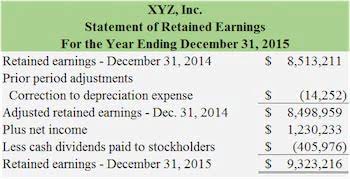
Using a payroll tool will save you the money you’d otherwise need to spend on compensation for a professional accountant—and experienced ones aren’t cheap. There’s tons on your plate, from essential tax payments to filing taxes to managing new or existing employees. Processing this information manually requires careful review for accuracy. To make this task even more challenging, tax laws and regulations are frequently changing. Payroll is a significant monthly commitment, and manual payroll is time-consuming. You might be holding off due to budgetary concerns; after all, many small businesses find themselves strained in the first few years.
Payment Gateway

By putting your payroll on autopilot, you’ll streamline payment calculations, reduce errors, and save time and money in the process. Of course, in order for payroll automation to work for you, you’ll need to choose the right platform and understand how to use it. In this guide, we’ll go over everything you need to know about automating payroll for your business. Not only will this make things easier for you, but you can also enjoy peace of mind knowing that you’re complying with IRS regulations and tax laws. Your employees work hard, and they deserve to be paid accurately and on time, and it’s your responsibility as a business owner to make that happen.
How to choose the right payroll automation software

Seek out the software that gives you the functionality to scale with your business. Employee self-service apps allow staff members to access payslips, request leave, and update personal information on the go. A few include subscription fees, implementation costs, and sometimes even per-employee fees. Compare the different pricing models vendors offer to find one that best fits your wallet. Empower your staff with self-service for payslips, tax forms, and all relevant payroll information. This will lessen HR’s administrative workload and increase employee satisfaction.

Evaluating Payroll Software Options
If your business is growing, your payroll system needs to grow with it. Manual systems struggle to adapt to increased employee counts, different time zones, and varied bookkeeping for cleaning business pay structures. Whether your team grows from 50 to 500 or expands across multiple continents, an automated payroll system adapts without losing efficiency.

What to Look for in Payroll Software
Automated payroll software normally comes with the proper guidelines of procedure coded in the system. This means you avoid the risk of falling outside the code of conduct on – for example – payroll taxes. The good thing about a cloud based payroll system is that it doesn’t have bad days that will affect its work. Automation reduces the chances that an employee’s wage calculation or a portion of the employee’s data will be lost or improperly entered. When data is incorrectly imputed it can take up time to correct as well as cause issues for the employee and company – such as reimbursement and or legal challenges.

Responsive vs adaptive design: Choosing the right approach
- Automated payroll tools offer a range of features, including data management, automated calculations, payments, and reporting.
- In short, it streamlines tasks like calculating wages, deducting taxes, and issuing payments., reducing the need for manual input and minimising the risk of human error.
- While garnishments and support orders should still be verified by HR, payroll automation can regularly deduct the amounts specified in a notice once entered.
- Get your tax forms and documents (EIN, I-9, W-4) ready, and make sure your employees are aware of the switch to a new system before you roll it out.
- Integrate payroll systems with existing HR software or accounting systems to avoid data duplication and streamline onboarding.
In short, it streamlines unearned revenue tasks like calculating wages, deducting taxes, and issuing payments., reducing the need for manual input and minimising the risk of human error. Automating laborious payroll tasks can reduce the amount of time you need to spend each pay cycle. Using automated payroll software to handle manual tasks like data entry and calculation to free up time to spend on more impactful, strategic work.
- By automatically deducting needed amounts and relaying them to a trusted payroll provider, organizations streamline and improve the punctuality of their tax compliance.
- When vendors trust that your organization will pay accurately and on time, negotiation leverage improves, potentially leading to better payment terms, volume discounts, or exclusive deals.
- Our cards integrate with payroll and accounting software including Square Payroll, Quickbooks, NetSuite, and Xero.
- This automation significantly reduces the risk of human error and maintains consistency across payroll processes.
Download The Capium App
Automate payroll to payroll automation create scalable processes for your growing business. These systems can accommodate additional team members as the company grows, simplifying onboarding and managing payroll complexities. Direct deposit or digital payment methods are convenient for employees, reducing the risk of lost or stolen checks.












